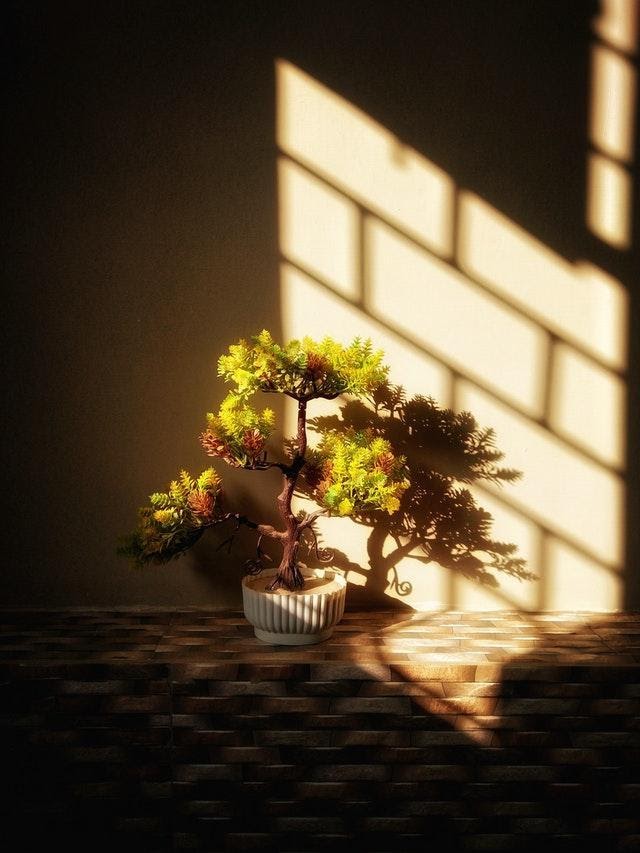If you want to care for a Bonsai tree, you must have patience and time to commit as you would when responsible for any living plant. These boast an exceptional fragility and challenges in maintaining, creating a need for extra attention over other specimens.
But once you learn how to grow a bonsai tree : Bonsai Mary (check out the website), and the intricacies of the tree’s needs, it’s merely a matter of following that regimen routinely.
The Japanese term “Bonsai” means “planted in a container.” Generally, a process of dwarfing occurs to keep the larger shrubs or trees to reach merely half the size they typically would. The Bonsai is more so a miniature tree much smaller than what the standard version would be.
These are pruned and trained to maintain them in such a way that meets the same standards as the traditional full-grown version, including encouraging adequate fruit growth and flowering for trees meant to do so when appropriate. The practice has become designated a type of “botanical art form” that has developed quite a solid following of enthusiasts.
Grow And Care Of Bonsai Trees
Bonsai or container planting is an art form Asians enjoyed for centuries. The seeds used for the practice are the same as those from which full-size trees grow. Still, these occur in minute containers with continual pruning and maintenance to produce elegant miniature versions of the traditional shrubs or trees. Open for guidance on growing these specimens.
-
Choosing The Ideal Species
As with any tree or shrub that you select for your home, the climate and environment need to consider the health of the tree. You’ll want to choose a species that can survive in your region.
- Outside Options: If you keep your Bonsai outside, some common choices are oak, Japanese/Chinese elm, crabapple, magnolia, but these need to work in your climate, so check with your nursery for your specific region.
- Indoor Options: Those who wish to keep the tree inside or those whose climate is typically hot, tropical species are more suited to this atmosphere, such as olive trees, Jade, or snowrose.
- Coniferous: Awesome selections in this category include pines, cedars, spruces, or junipers.
-
Growing A Bonsai Tree
You can opt to plant your tree from a seedling. It can be rewarding to watch the process from this stage, but it can also be a prolonged, precise path to take if you want to see results sooner than not. The roots need to establish and develop into a strong foundation before starting the pruning and training aspect. The suggestion is that it can take years, but many people enjoy the control of this scenario.
- Seedlings: Overnight, you need to soak these before planting in soil that offers excellent draining and nutrients for your specific tree. Only place the tree in a display container after it reaches maturity. It will stay in its standard container for training until that point.
- Instructions: Following the guidelines for the species you have as far as watering, sunlight, temperature. Once the tree establishes into a resilient, sturdy breed, you can then begin to train.
You can also choose to purchase a tree already going through pruning and maintenance instead of planting from seed. It is the most seamless way for a newcomer to Bonsai to start the art form, but it can also prove costly. These receive much time and care in the growing process creating the expense, but you can shop around with nurseries and plant shops to find the ideal option.
- Instructions: Allow the shopkeeper to explain the method they use for maintaining the Bonsai so that you can follow those same guidelines. The person who has trained the tree is the one who understands its particular needs. You must meet those exact requirements.
- Adjustment: Before you start working with the plant at home, allow it time to adjust to its new surroundings. Plants are like any living being they don’t love change and aren’t necessarily happy to move homes.
-
Health Of The Bonsai Tree
The seasons in your particular region will create reactions in the Bonsai, especially if the tree is one that you leave outside. The temperature, sun exposure, and the inclement weather for some areas can be drastic from one season to the next while others are slighter. These changes need to dictate for you how you care for the plant.
- Winter: During a cold winter, trees typically lie dormant with no leaf production, nor will you see growth. That means they have minimal need for nutrients. Still, trimming is unnecessary since this will deplete nutrients the plant will need for spring. The most care the Bonsai will require is water.
- Spring: The nutrients not used in the winter will be necessary for springtime to help the plant replenish its leaves and begin to grow again. At this time of year, it’s always a good idea to repot and use added nutrients in the soil mixture plus begin the pruning.
- Summer: Remember to water in the hot summer months, more so than usual. The tree will grow and deplete more of the nutrients during this season.
- Fall: The nutrients start to build back up since the growth begins to fall back to prepare for winter gradually. Again, you want to consider repotting and trimming for the dormant season.
Bonsai trees thrive in the morning light for many species, but that does depend on your region and tree type. Every few days, it’s essential to remember to rotate the plant 90 degrees so that each part of the foliage has access to the same level of sun exposure.
There are specific fertilizers you need to use for Bonsai that means to keep them healthy. If you notice the soil is becoming dry or looks dusty, it needs water. The frequency with which you need to water will depend on which season you’re in and the plant type.
In the summer, it’s not unheard of to provide water each day, but in the winter, the species will likely only need a drink once every couple of days.

-
Training The Bonsai
The training container you choose might restrict your choices regarding the style you use, but there are many traditional methods from which to select. Some are reminiscent of what you would see in nature.
- Yoyogi: The tree will have a kind of slant instead of growing in an unnatural straight upright position. This deems a more “casual upright” appearance.
- Beijing: The style references the “literati form.” With this, the tree’s trunk typically shows as a twisted, long appearance but with few branches.
- Shakan: With this particular style, you would think the wind blew the tree into a side slant. It boasts among the most striking techniques.
- Chukka: You’ll get this a “formal” tree in its straight upright, almost like a soldier, appearance, sturdy, straight. The branches are precise and maneuver their way in an even stretch around the tree.
When you train, the trunk requires “gentle” bending, as do the branches to manipulate the growth. You will wire the tree to keep it in the desired place. - Wire: The wire for the trunk needs to be heavier than that for the branches with an “annealed” copper typical for coniferous species and aluminum generally used for deciduous. The wire should go around the limb no more than two times at a 45-degree angle without being too tight, or you can create damage.
With each growth spurt and the passage of time, rewiring will be necessary to continue the training process until the shape holds and wiring is no longer a requirement. -
Pruning Your Bonsai Tree
When you prune your Bonsai or trim the plant, use a compact pruning tool to take off pieces of the branches or buds so the tree shapes in the way you desire. With each trim, growth will instigate in another area. Understanding where you need to concentrate your pruning efforts and the frequency is part of the art form and learning the process requires much practice.






